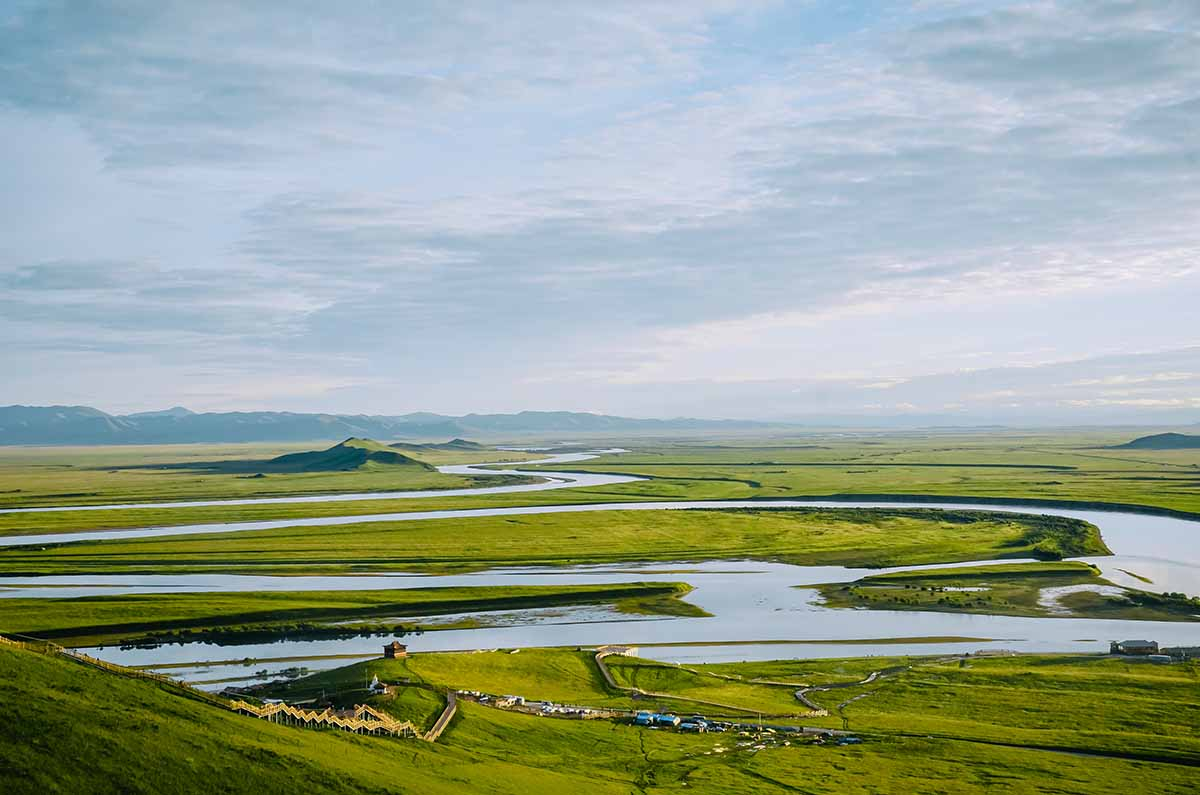The Four Sacred Mountains of Buddhism in China

Of the various religions in China, Buddhism is the most popular and widespread. It has a history of close to 2,000 years in China. The country's different geographic areas and languages mean Chinese Buddhism can be roughly divided into Han (Chinese) Buddhism, Tibetan Buddhism and Pali Buddhism. Han Buddhism prevails among the population of the dominant Han ethnic group, and Tibetan Buddhism in Tibet, Inner Mongolia, Qinghai, Gansu and other Tibetan communities, while Pali Buddhism is prevalent among the Dai minority in Yunnan Province.
In Han (Chinese) Buddhism, Mount Wutai of Shanxi Province, Mount Emei of Sichuan Province, Mount Putuo of Zhejiang Province and Mount Jiuhua of Anhui Province are regarded as the Four Sacred Mountains. According to legends, these four great mountains are the locations of the enlightenment of Bodhisattvas Wenshu, Puxian, Guanyin and Dizang.
The Four Sacred Mountains of Buddhism are famed for their rare Buddhist libraries, cultural antiques, splendid Buddhist architecture and beautiful scenery. They attract Buddhist disciples and tourists from around the world.
● Mt. Wutai
Mt. Wutai is the most renowned among the four sacred mountains of Chinese Buddhism, located in Shanxi province. Since the Tang Dynasty, Mt. Wutai has arguably been the sacred Buddhism centre of China. After frequent construction and restoration, there were over 300 temples on Mt. Wutai at its peak. Currently, there are only 39 temples left, but Mt. Wutai maintains its magnificence, dignity and rich cultural atmosphere. Mt. Wutai is generally recognised as the holy land of Bodhisattva Wenshu and was highly worshiped by emperors in ancient China. In tandem with the spread of Chinese culture since the Tang Dynasty, Mt. Wutai is recognised as a famous sacred mountain of Buddhism by the whole world.
● Mt. Putuo
Mt. PutuoMt. Putuo stands in Zhejiang province, which is regarded as the sacred land of Bodhisattva Guan Yin (Avalokitesvara). Among the four sacred mountains of Chinese Buddhism, Mt. Putuo is the only one that is located on an island. This means that those on the island can see the scenery of unrestrained and far-ranging ocean. According to Avatamsaka Sutra, Putuo is short for Putuoluojia, which means pretty small white flower in Sanskrit. Mt. Putuo has been a sacred Buddhism place since the Qin Dynasty. Then, coinciding with the development of the Maritime Silk Road, Mt. Putuo has gradually played an important role in Chinese Buddhism.
● Mt. Emei
As one of the four sacred Chinese Buddhism mountains, Mt. Emei is on the list of World Cultural and Natural Heritage sites. It is regarded as the holy land of Bodhisattva Puxian (Samantabhadra Bodhisattva). According to records, Buddhism was spread to Mt. Emei in around the 1st century, and has been constantly developed on for over 2,000 years. There are near 30 temples on the mountain attracting visitors from all over the world. Also, Mt. Emei is famous for its bronze statues of Buddha and unique Buddhist music. Located in the southeastern region of China, Mt. Emei is not only famous for its religious status, but also for its fascinating landscape. The renowned Chinese poet of the Tang Dynasty, Li Bai said that even though there are so many sacred mountains in Sichuan, Mt. Emei is the only one that is beyond comparison.
● Mt. Jiuhua
Mt. Jiuhua is often regarded as the most popular among the four sacred mountains of Chinese Buddhism, which is the holy land of Di Zang (Ksitigarbha, Bodhisattva and protector of beings in hell realms). There are 99 mountains in the region of Mt. Jiuhua with over 80 temples and daily visits of devotees to the Buddha estimated to be in their thousands. On the other hand, Mt. Jiuhua is also famous for its beautiful landscape of mountain peaks, waterfalls, streams, caves, and plants. The well-known poet of the Northern Song Dynasty Wang Anshi praised Mt. Jiuhua and said that even though there are so many mountains, Mt. Jiuhua stands out as being both grand and peculiar.









